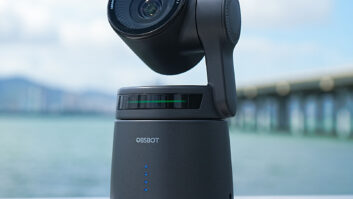WASHINGTON, D.C. — The major appliance industry was seemingly unanimous in its praise of the landmark energy efficiency and water-saving agreement reached last month with a coalition of government agencies and special interest groups.
The comprehensive accord, forged by manufacturers, environmentalists, energy efficiency advocates, utilities, and federal and state governments, will significantly improve energy efficiency and water-consumption rates for clothes washers and calls for the Department of Energy (DOE) to establish new Energy Star levels for washers and refrigerator/freezers.
Moreover, the agreement advocates federal tax credits for vendors whose washers and refrigerators exceed minimum efficiency standards in order to help offset the cost of developing, manufacturing and marketing the improved appliances.
The pact represents the first time that manufacturers played an active, rather than reactive, role in developing new efficiency standards.
Commenting on the negotiations, Maytag majap division president William Beer said, “While there were a number of viewpoints represented, at the end of the day we came together to craft an agreement that is good for consumers, good for the environment and good for companies committed to products that are energy efficient and environmentally friendly.”
Indeed, if adapted by the DOE and Congress, the proposals are expected to reduce energy demand by 5 quadrillion Btu by 2030, equivalent to the electricity produced by five large coal-fired power plants over that time. As a result, consumers will save an estimated $25.4 billion in energy costs, and the environment will be spared upward of 95 million metric tons of carbon emissions.
The coalition said the new regulations will also cut water usage by about 18 gallons per wash, or some 6 trillion gallons by 2030, which is enough to supply the water needs for more than 6 million homes for a quarter of a century. According to the DOE, manufacturers can meet the washing machine standards by developing faster spinning units that remove more water from the cleaning process.
Terms of the agreement include a two-part energy standard for clothes washers in which all units manufactured after 2004 will be required to achieve a 1.04 modified energy factor (MEF), representing a 35 percent increase in energy efficiency over the current standard of 0.817. The MEF would be raised again in 2007, to 1.26, and would run at least through 2012. New standards for refrigerators would begin next year.
The proposed tax credit, which runs through 2006, gives majap suppliers a credit of $50 per unit on products that exceed the minimum efficiency standard by 10 percent, and $100 for units exceeding the standard by 15 percent. Credit limits of $60 million on washers and $60 million on refrigerators would be set for each supplier in order to level the playing field between large and small companies, and the credits would correspond with the new Energy Star levels.
In addition, majap makers have agreed to provide water usage information on clothes washers. The inaugural program, to be managed by the Association of Home Appliance Manufacturers (AHAM), will monitor industry progress by tracking average water factors of new washing machines shipped beginning next year.
AHAM will report the water factor of any model that qualifies for the Energy Star designation or tax credit, and products will be labeled with the water usage data.
Speaking from his vantage as chairman of AHAM, Amana’s Alan Kessler said, “The aggressive clothes washer standards and associated tax credits for high-efficiency appliances embodied in this agreement will result in substantial energy and water savings for consumers.”
In a written statement, AHAM described the pact as “historic” and noted that the tax credit “will transform the marketplace and enhance the sale of energy-efficient products and help mitigate the investment burden on the appliance manufacturers for the cost of the clothes washer standard.”
Whirlpool president and chief operating officer Jeff Fettig also weighed in on the accord. “Whirlpool endorses this historic agreement that not only represents a significant advancement in energy efficiency, but will also benefit the environment,” he said. He added that the pact “provides us with the type of market-based incentives we need to keep investing in such innovations.”
For its part in the negotiations, GE Appliance president/CEO Larry Johnston credited his company with being “a driving force in the negotiations that resulted in the agreement. The consumer always wins when corporate America, the government and special interest groups can voluntarily reach agreement on such an important issue.”
Maytag’s Beer added that “while we realize the new standards will require additional product development for some of our existing washer models, we look forward to the challenge.” Maytag helped create the market for high-efficiency appliances two years ago with its Neptune front-loading washer, which currently meets the new energy standards.
For Miele, the efficiency agreement represents an endorsement of the company’s existing internal standards. “For decades we have taken a proactive stance in energy- and water-efficient product design, as well as voluntary reporting and labeling,” said president Nick Ord.
According to Whirlpool, high-efficiency washers only represent about 5 percent of all laundry products currently sold in North America. The company expects that consumer education and marketing will represent a sizeable portion of the industry’s investment in energy-efficient products going forward.













